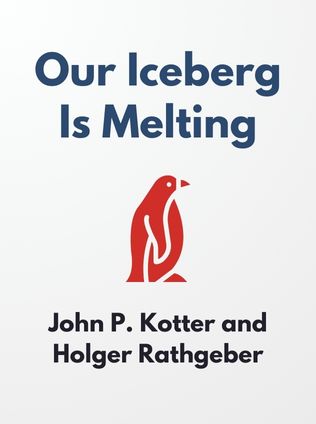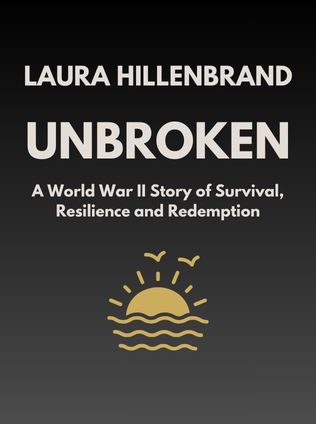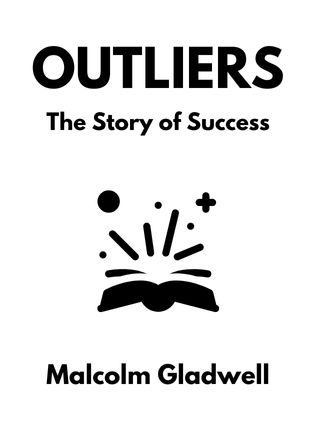
Our Iceberg Is Melting
By John P. Kotter and Holger Rathgeber
Published 01/2005
About the Author
Dr. John Kotter, a distinguished professor at Harvard Business School, is a leading authority on leadership and change management. With a career spanning several decades, Kotter has dedicated his life to understanding the dynamics of organizational change and how leaders can effectively guide their teams through periods of uncertainty and transformation. His work is widely respected in the academic community and has had a profound impact on real-world practices in various industries.
Kotter's approach is both practical and theoretical, making his insights accessible to a broad audience. He is best known for his Eight-Step Process for Leading Change, which has become a standard model for organizations seeking to implement successful change initiatives. This model is the foundation of many of his books, including the one in focus here, "Our Iceberg Is Melting," co-authored with Holger Rathgeber. Rathgeber, a seasoned management consultant, brings additional depth to the book with his practical insights into the challenges of leading change in complex environments.
Together, Kotter and Rathgeber have created a narrative that is both simple and profound, using a fable about a penguin colony to illustrate essential lessons in change management. Their collaboration combines Kotter's academic rigor with Rathgeber's practical experience, resulting in a book that is both educational and engaging.
Main Idea
"Our Iceberg Is Melting" is a fable that serves as a metaphor for the challenges of change management. The story revolves around a colony of penguins living on an iceberg in Antarctica. One day, Fred, a curious and observant penguin, discovers that their iceberg is melting. This discovery threatens the very existence of the colony, as the melting iceberg could disintegrate and leave them without a home.
The main idea of the book is to illustrate the process of leading change through a simple yet powerful narrative. The penguins' journey from complacency to action mirrors the steps that any organization or individual must take to successfully navigate change. The story highlights the importance of creating a sense of urgency, forming a strong team, developing a clear vision, communicating effectively, empowering others, and remaining vigilant against complacency.
Through the penguin fable, Kotter and Rathgeber demonstrate that change is not just about survival, but also about growth and adaptation. The lessons from the story are applicable to both personal and professional life, making "Our Iceberg Is Melting" a valuable resource for anyone facing change.
Table of Contents
- Replace Complacency With Urgency
- Make a Team
- Develop a Vision
- Spread the Word
- Make People Feel Important
- Don’t Get Complacent
- Never Stop Improving
1. Replace Complacency With Urgency
The first and perhaps most critical step in any change process is replacing complacency with urgency. In "Our Iceberg Is Melting," this is vividly illustrated when Fred, a curious and observant penguin, discovers that their iceberg is slowly disintegrating. Fred's discovery symbolizes the often-overlooked early signs of change that leaders must pay attention to. The challenge, however, lies not in the discovery but in convincing others that there is a problem.
Kotter emphasizes the importance of creating a sense of urgency among those affected by the change. He explains,
"The greatest enemy of change is complacency." - John KotterWithout a sense of urgency, people are likely to continue with the status quo, blind to the threats that could potentially lead to catastrophic outcomes. The penguin colony, much like any organization or community, initially resists Fred’s alarming news, reflecting the natural human tendency to resist change, especially when it disrupts comfort and routine.
In real-world scenarios, leaders can create urgency by:
- Discussing openly the reasons for change and the dangers of inaction.
- Using data and observable facts to highlight potential risks.
- Engaging in honest discussions about current processes and their flaws.
Creating urgency is about making people feel the need to act, to move from "good enough" to "better." This step sets the foundation for all the other steps that follow.
The penguins' iceberg is a metaphor for any environment—personal, professional, or societal—that appears stable but is, in fact, in danger of collapse. In many organizations, this is seen when markets shift, technology evolves, or when internal processes become outdated. Leaders who are attuned to these early signs and who can instill a sense of urgency in their teams are better positioned to navigate these shifts successfully.
However, creating urgency is not about inciting panic or fear; it is about fostering a proactive mindset. For example:
- A company facing declining sales might gather data showing the trend and present it to the team, not to alarm them, but to motivate them to innovate.
- A community facing environmental degradation might use evidence of the impacts on health and local economies to rally residents to action.
The goal is to move people from complacency to action, creating a shared sense of purpose that drives the change process forward.
2. Make a Team
Once urgency is established, the next step is assembling a team capable of driving the change. Louis, the head of the Leadership Council in the penguin colony, understands that he cannot tackle this issue alone. He needs a team of dedicated and skilled penguins to help steer the colony through the crisis.
Sign up for FREE and get access to 1,400+ books summaries.
You May Also Like
The Subtle Art of Not Giving a F*ck
A Counterintuitive Approach to Living a Good Life
By Mark MansonRich Dad Poor Dad
What the Rich Teach Their Kids About Money - That the Poor and Middle Class Do Not!
By Robert T. KiyosakiHow To Win Friends and Influence People
The All-Time Classic Manual Of People Skills
By Dale CarnegieQuiet: The Power of Introverts
The Power of Introverts in a World That Can't Stop Talking
By Susan Cain



















